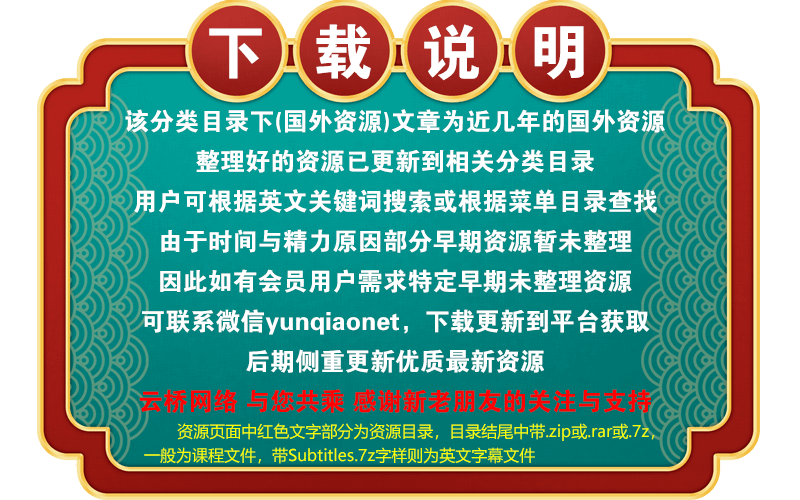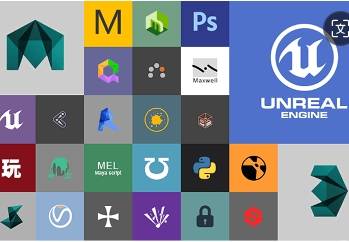Release date:2017, July 31
Duration:03 h 41 m
Author:Aaron F. Ross
Skill level:Intermediate
Language:English
Exercise files:Yes
Arnold is the new high-quality rendering engine in Maya. Realistic rendering in Maya is easier than ever with this brute force Monte Carlo ray tracer. Arnold’s physically based rendering accurately simulates light in the real world, but allows breaking physical laws to achieve artistic styles. This course is an overview of essential features for lighting, materials, and rendering in Maya using Arnold core version 5.
Topics include:
Arnold rendering concepts
Lighting with Maya and Arnold lights
Controlling exposure
Filtering light with Gobo
Light attenuation with Decay
Image-based lighting with Skydome
Exterior daylight with Physical Sky
Arnold Standard Surface material attributes
Mapping material attributes
Rendering refractions
Mesh subdivision and displacement at render time
Shading effects such as ambient occlusion and vertex color
Camera effects such as fisheye and depth of field
Animation image sequence renderingIntroduction
Welcome 1m 5s
Using the exercise files 4m 13s
Updating the Arnold plugin 2m 45s
1. ConceptsCourse prerequisites 2m 11s
Introducing Arnold 4m 24s
Arnold rendering concepts 3m 43s
Controlling processing in Render Settings 3m 15s
Interactivity in the Arnold RenderView 7m 50s
Balancing sampling and Ray Depth 10m 44s
2. Studio LightingCreating an Arnold area light 5m 15s
Setting Ai Area Light attributes 5m 29s
Controlling camera exposure 2m 43s
Rigging a spot light 4m 53s
Focusing a spot light 7m 40s
Masking a spot light with gobo filter 3m 57s
Adding suffuse illumination 4m 12s
Fine tuning lights and rendering 4m 33s
Attenuation with Light Decay filter 8m 24s
3. Natural and Environmental LightingImage-based lighting with Ai Skydome light 5m 54s
Directing Skydome light visibility 3m 54s
Exterior daylight with Physical Sky 4m 1s
Interior daylight with a Skydome 8m 6s
Increasing Skydome render sampling 3m 57s
4. Materials and MappingSetting Ai Standard Surface material attributes 9m 14s
Mapping opacity with an alpha channel 4m 32s
Controlling specular roughness 7m 19s
Shading with ambient occlusion 6m 53s
Building an Arnold shading network 6m 5s
Rendering refractions with transmission 9m 21s
Rendering vertex color with Ai UserData Color 4m 6s
Wireframe analysis with Ai Utility shader 3m 20s
Smooth mesh subdivisions at render time 3m 2s
Deforming a mesh with displacement 8m 6s
Displacement, subdivisions, and 1 bump mapping 4m 54s
5. RenderingAtmospheric perspective with Ai 1 Fog 6m 1s
Lens distortion with fisheye 1 camera 2m 56s
Rendering a panorama 1 4m 17s
Rendering light and object passes 1 with AOVs 9m 23s
Compositing AOVs in Photoshop 4m 17s
Rendering bokeh with depth of field 6m 46s
Rendering an image sequence 6m 27s
Conclusion Next steps 1m 2s00. Introduction 01 – Welcome 02 – Using the exercise files 03 – Updating the Arnold plugin
01. Concepts 04 – Course prerequisites 05 – Introducing Arnold 06 – Arnold rendering concepts 07 – Controlling processing in Render Settings 08 – Interactivity in the Arnold RenderView 09 – Balancing sampling and Ray Depth
02. Studio Lighting 10 – Creating an Arnold area light 11 – Setting Ai Area Light attributes 12 – Controlling camera exposure 13 – Rigging a spot light 14 – Focusing a spot light 15 – Masking a spot light with gobo filter 16 – Adding suffuse illumination 17 – Fine tuning lights and rendering 18 – Attenuation with Light Decay filter
03. Natural and Environmental Lighting 19 – Image-based lighting with Ai Skydome light 20 – Directing Skydome light visibility 21 – Exterior daylight with Physical Sky 22 – Interior daylight with a Skydome 23 – Increasing Skydome render sampling
04. Materials and Mapping 24 – Setting Ai Standard Surface material attributes 25 – Mapping opacity with an alpha channel 26 – Controlling specular roughness 27 – Shading with ambient occlusion 28 – Building an Arnold shading network 29 – Rendering refractions with transmission 30 – Rendering vertex color with Ai UserData Color 31 – Wireframe analysis with Ai Utility shader 32 – Smooth mesh subdivisions at render time 33 – Deforming a mesh with displacement 34 – Displacement, subdivisions, and bump mapping
05. Rendering 35 – Atmospheric perspective with Ai Fog 36 – Lens distortion with fisheye camera 37 – Rendering a panorama 38 – Rendering light and object passes with AOVs 39 – Compositing AOVs in Photoshop 40 – Rendering bokeh with depth of field
41 – Rendering an image sequence
06. Conclusion 42 – Next steps
Ex_Files_Maya_Rendering_Arnold_5.7z
 Channel and
Channel and  Group
Group
1、登录后,打赏30元成为VIP会员,全站资源免费获取!
2、资源默认为百度网盘链接,请用浏览器打开输入提取码不要有多余空格,如无法获取 请联系微信 yunqiaonet 补发。
3、分卷压缩包资源 需全部下载后解压第一个压缩包即可,下载过程不要强制中断 建议用winrar解压或360解压缩软件解压!
4、云桥网络平台所发布资源仅供用户自学自用,用户需以学习为目的,按需下载,严禁批量采集搬运共享资源等行为,望知悉!!!
5、云桥网络-CG数字艺术学习与资源分享平台,感谢您的赞赏与支持!平台所收取打赏费用仅作为平台服务器租赁及人员维护资金 费用不为素材本身费用,望理解知悉!



评论(0)